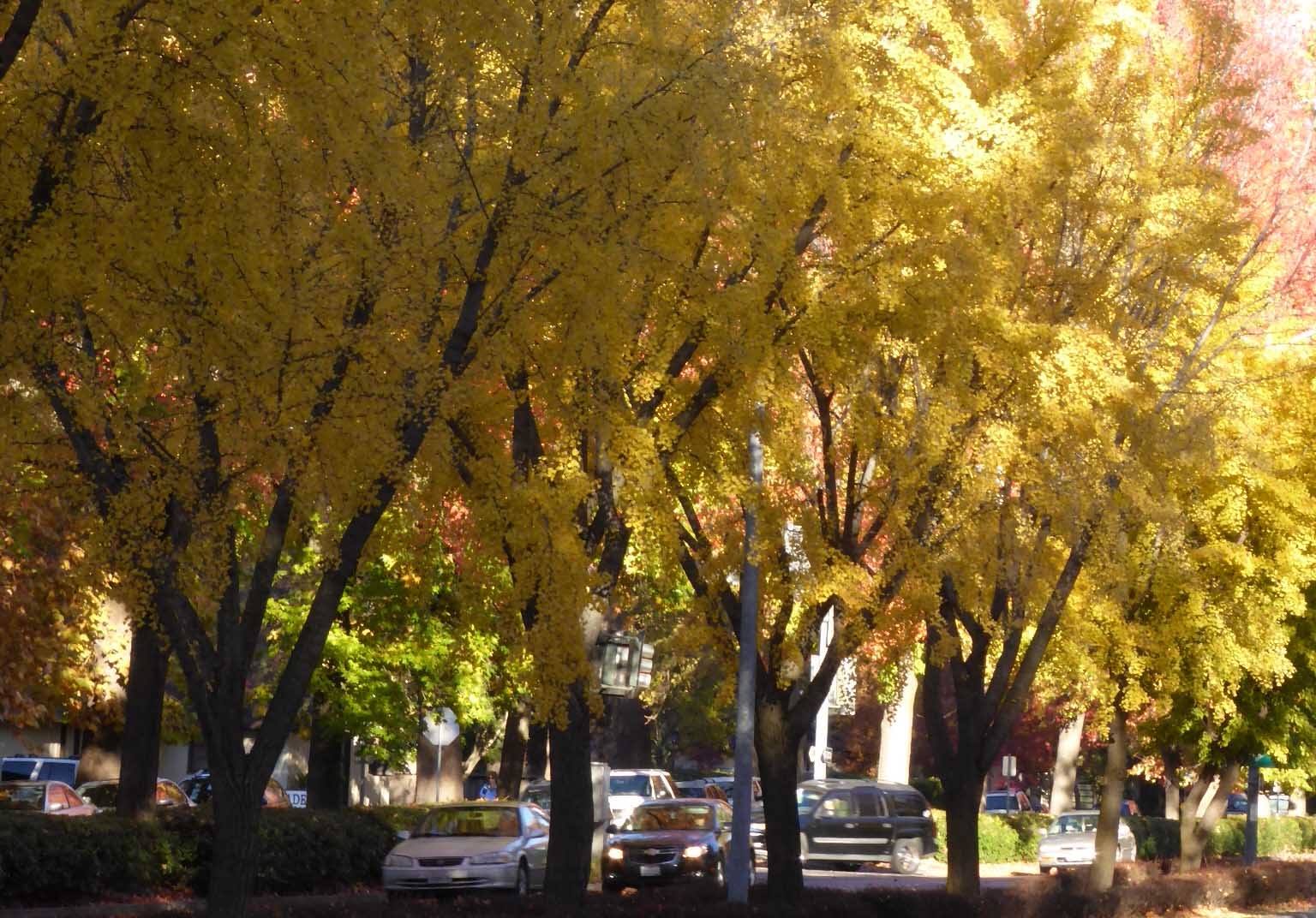
With the magnificent display of fall colors that now surround us in the Eastern Sierra it is difficult to resist the urge to visit a local nursery and acquire some plants that will liven up our own gardens. Although we cannot emulate the dramatic colors of the northern forests, we can certainly choose from palette of interesting shades – red, salmon, yellow, maroon, etc.
To get the best colored variety it is a good idea to visit a nursery in person in order to get what you want. We all know specific local trees that have outstanding color every year while others nearby don't seem to have anywhere near the same impact, proving that colors vary between different specimens of the same species. If ordering from a catalog, make sure to select a variety that has been bred specifically for good fall color.
Color can also be provided by fruits such as crab apples and colorful berries like pyracantha.
However, it is important not to get carried away by leaf color alone since for long term success other important factors should be considered. With our increasingly dry and hot climate it is prudent to make sure that our choices will be able to cope with our local conditions, and it is also vital to choose “the right plant in the right place”. Magnificent as our local cottonwoods are at the moment they do not make suitable trees for a small garden due to their enormous size and the problem of often shedding large branches as well as their water needs. Likewise the beautiful aspens are best left to grow in the higher elevations since they do not do well on the valley floor.
As always, when buying any sort of plant for the garden whether it is tree or shrub, do your homework; measure the space that you have available, think about the height that you want and decide what shape you need - upright or spreading. Check its hardiness rating making sure it is suitable for your zone, and consider the amount of irrigation that it will need and whether you are likely to be able to meet that need. Check whether it will be able to tolerate any adverse components of your soil such as salts, and also look upward to make sure that it will not be too close to utility wires.
A few suggestions for the eastside of the Sierra follow.
Trees: Koelreuteria bipinnata (goldenrain tree, Pistacia chinensis (Chinese pistache), Ginkgo biloba, Cercis canadensis (eastern redbud), Fraxinus spp. (ashes), Lagerstroemia indica (crapemyrtle), and the slightly shrubbier Amelanchier (serviceberries) or Sorbus (mountain ash) in the cooler mountain areas.
Shrubs: Cotinus (many different varieties with varying fall colors), Euonymus alatus (firebush), Punica granatum (pomegranate), Berberis (orange rocket or roseglow barberries), Cotoneaster, Rhus spp.
Fall color is often fleeting and a sudden frost can end it after only a few days of beauty, but other years it can last for much longer, and it is always good to have those moments of pizzazz to remember through the ensuing winter.